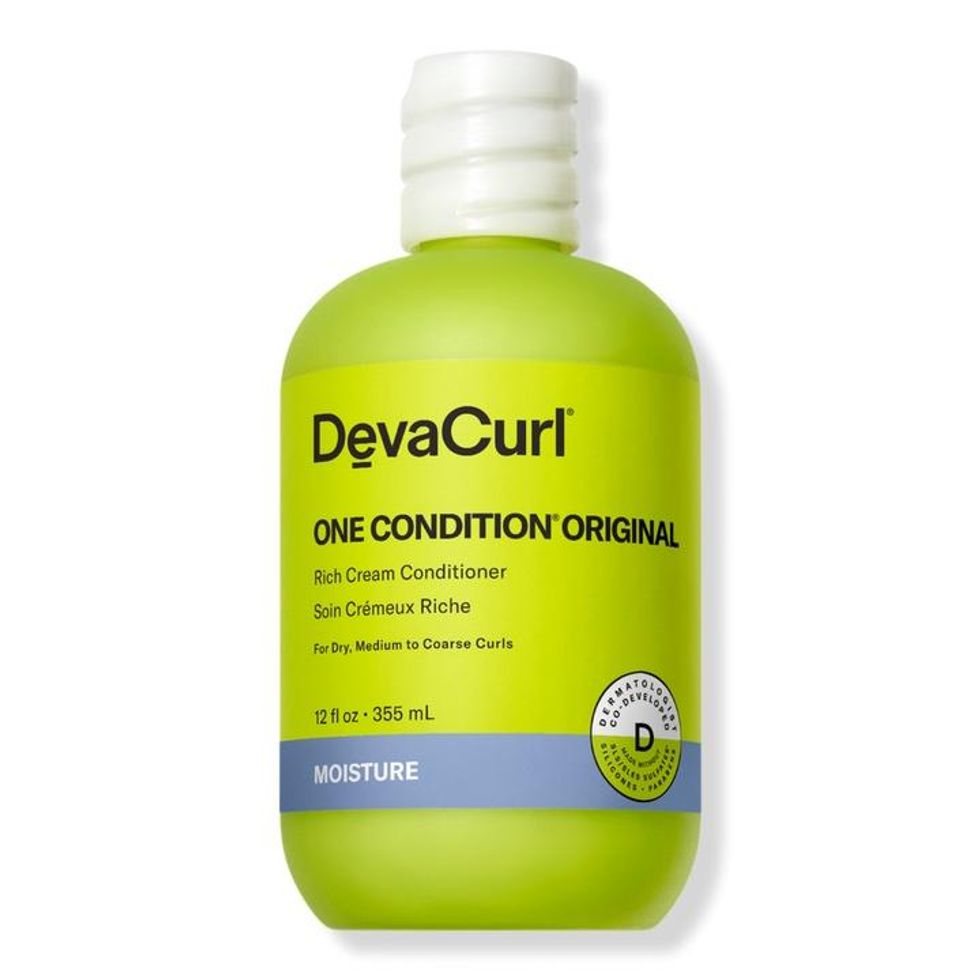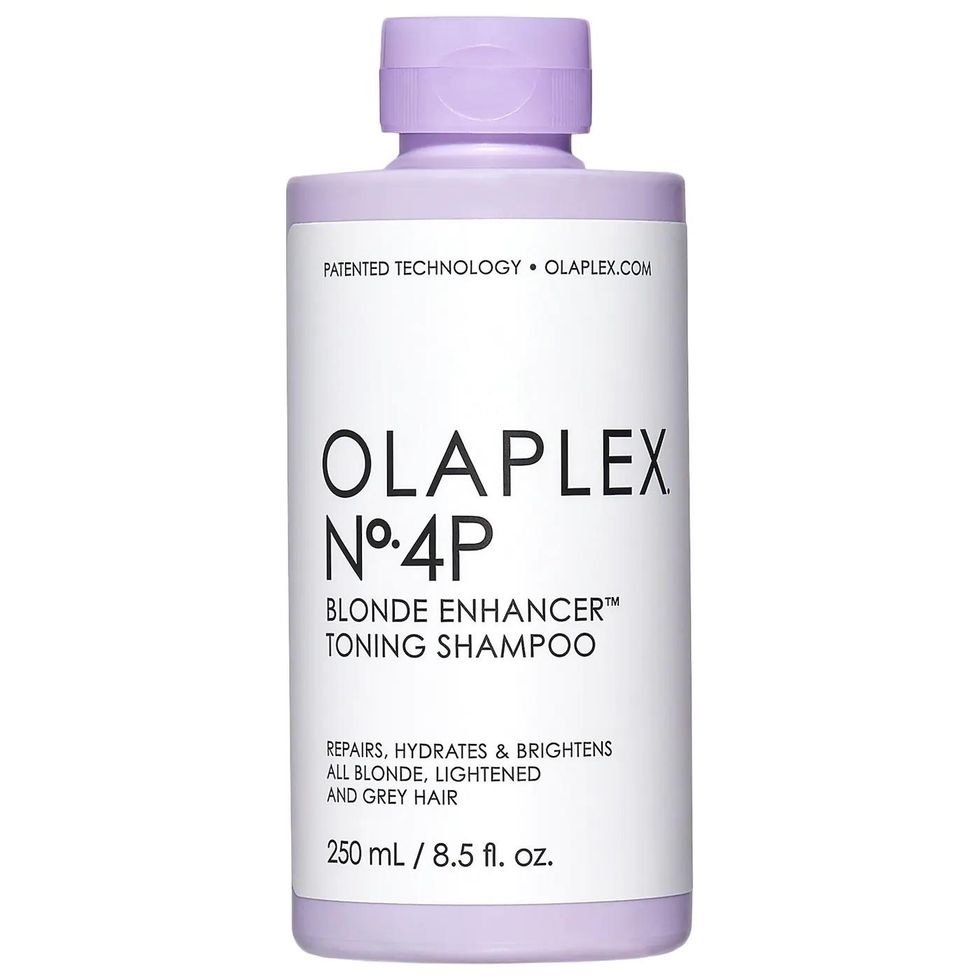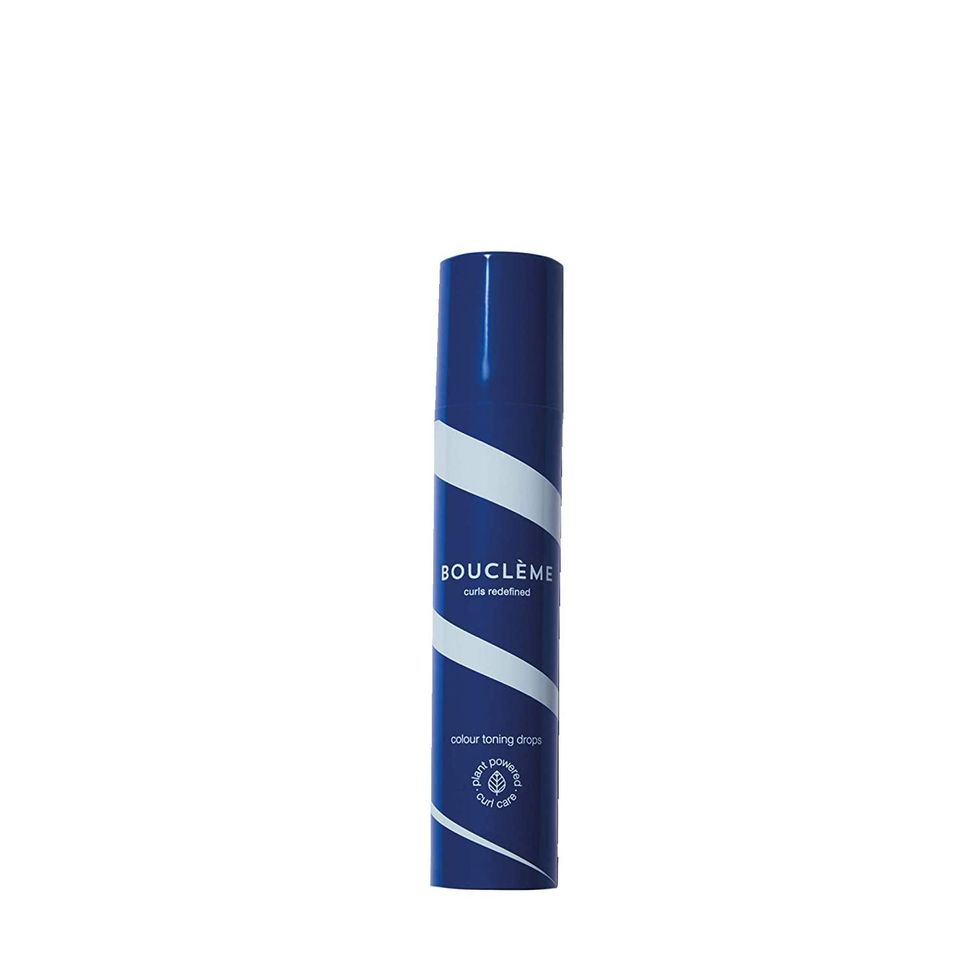The How & Why of Going (& Growing) Gray
Because stigmatizing gray hair is so passé.
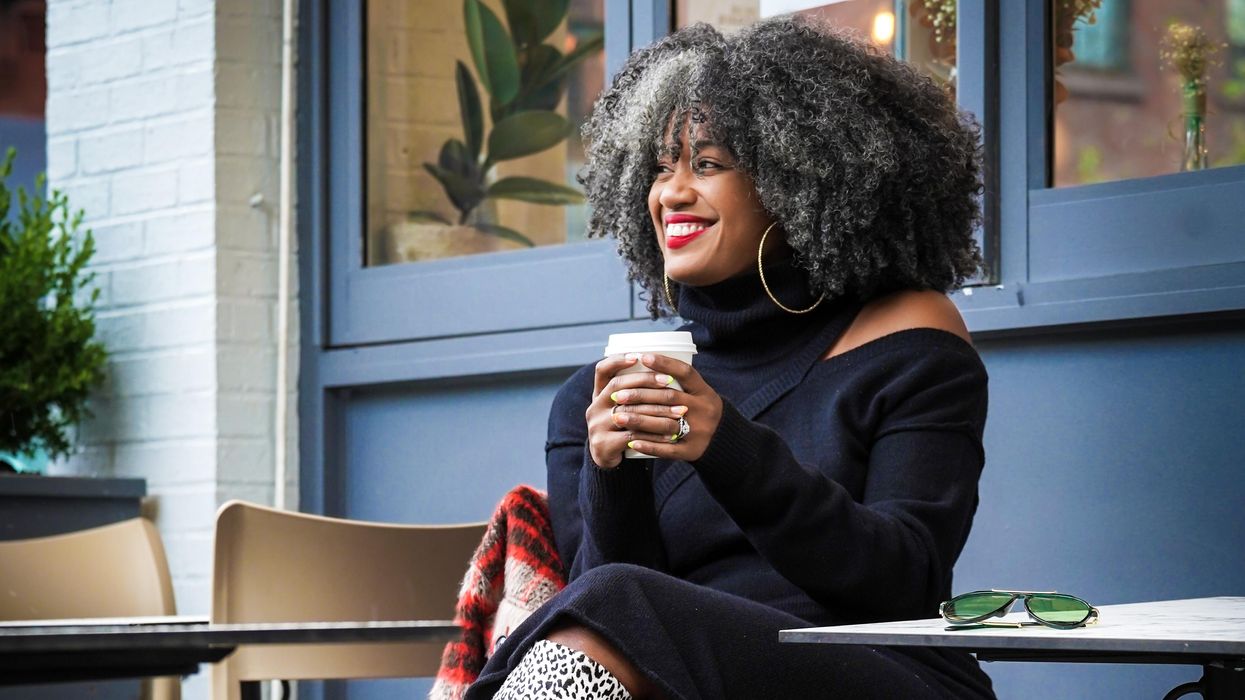
We attach a lot of meaning to gray hair. To some, sprouting silver strands is a mark of wisdom. For a while, it was a trendy, Tumblr-era, cool girl signifier. To certain people, it’s a telltale indicator of aging. As youth-obsessed as our culture is, it’s no shock that the latter outlook is the most pervasive. But what happens when finding your first gray earlier than anticipated?
You could elude the old wives' tale and pluck the stray hair out. You could hastily cover it up with a bought-in-the-middle-of-the-night box dye and face a thorough interrogation during your next sit-down with your colorist. Or you can ignore it entirely. Going gray in your mid-twenties or thirties presents an entirely different type of quandary than that of say, eye cream, injectables, or any other beauty treatment we undergo in an attempt to avoid mortality. But gray hair has come full circle and become supremely stylish—so much so that salon-goers have actually been requesting and paying for said shade for more than a minute now. So where do you go when you begin growing them on your own?
For these three women, the transition to gray was theirs to define. Keep reading to learn how the transition to gray connected them to a new community and why it changed their outlook on beauty—and changed their lives.
Danielle Jackson
Photo Producer, Podcast Host
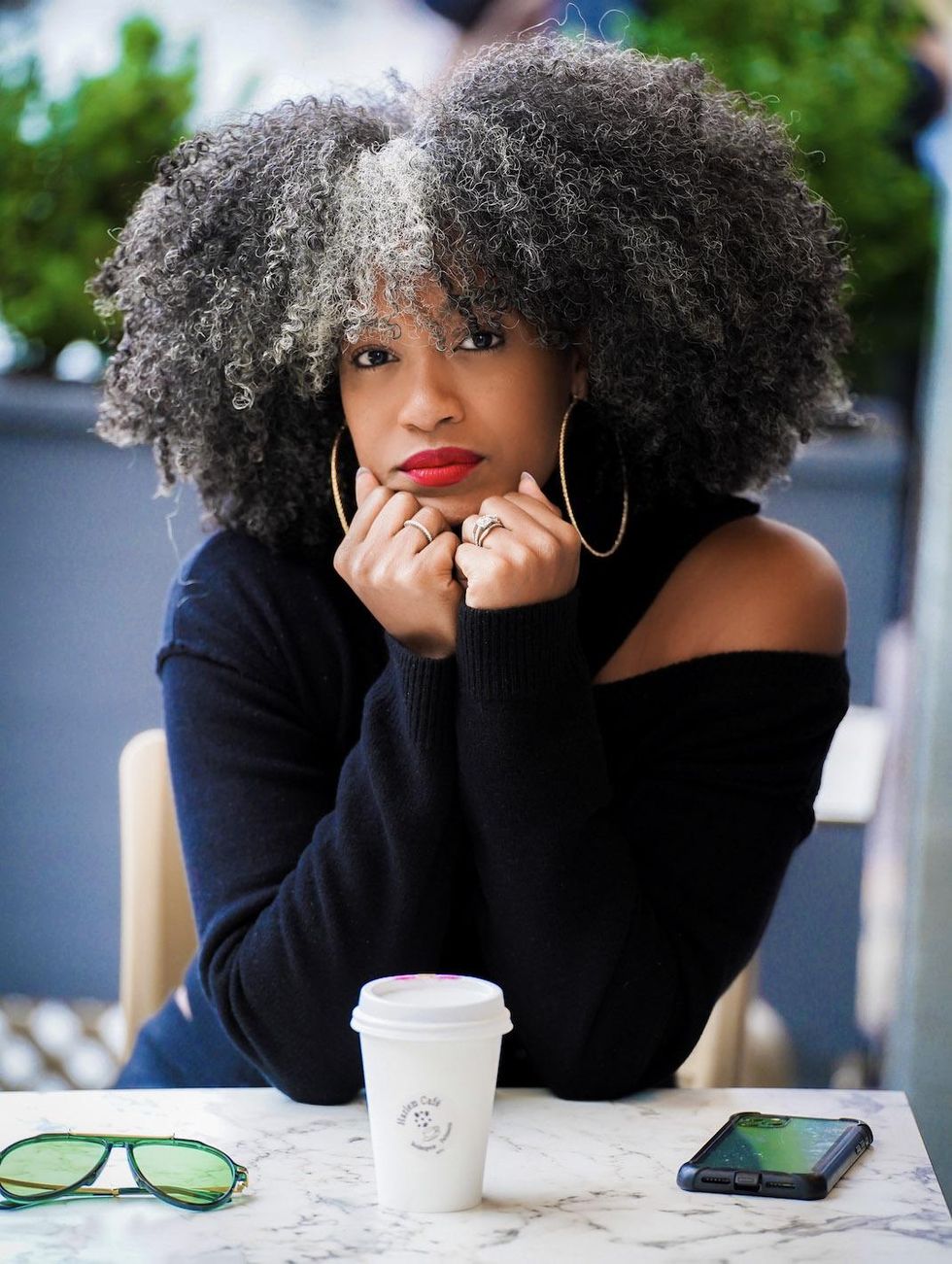
Jackson in 2022.
Photo: Courtesy of Danielle Jackson

Jackson in 2020.
Photo: Courtesy of Danielle Jackson
“Graying early runs in my family, so I found my first gray hair in my early teens. I was maybe 14 and my first grays started popping up in the crown area [of my head]. I wouldn’t say that I ever really fought it, though. I just figured, what’s one gray hair?
"I was a girl who loved coloring my hair and my goal was always to be blonde. But when I went blonde, I hated it—there's so much upkeep so it was kind of short-lived. While I was growing the blonde out, around the start of the pandemic, I had these huge white chunks. There was no part of my head that gray hadn’t touched.
"Then I had a baby, which catapulted my hair growth, but it was a weird blonde-gray color that didn't really make sense. That’s when I said ‘fuck it’ and cut the blonde off. Since I've cut it off, I feel so much more unique. The amount of people who approach me on the street is very overwhelming. I'm 38, so it's not like I should have a head full of grays at this point, if we're looking at how gray hair traditionally grows, but no one close to me gave me negative vibes about it.
"The only thing that I would complain about is that gray hair can be a little unruly—at least curly gray hair. It can be more frizzy since it’s lost some of what keeps it together. I always hear about how women have to go to the salon for a touch-up every two weeks, but we need to find a way to reclaim that time. Reclaim your time from the beauty salon! It just feels like a lot. Everyone's different and there’s the stigma that gray means old, but for me having so much gray hair, I don't feel older and I don't feel that I look older.
"As you age, you find different levels to your identity. This is another level to mine. It’s part of my true identity that has blossomed. First, it was my natural hair journey and now it’s this—it’s another level that I have won in this game called life.”
Shop Danielle's Gray Hair Essentials
Liz Kamarul
Muralist, Interior Stylist
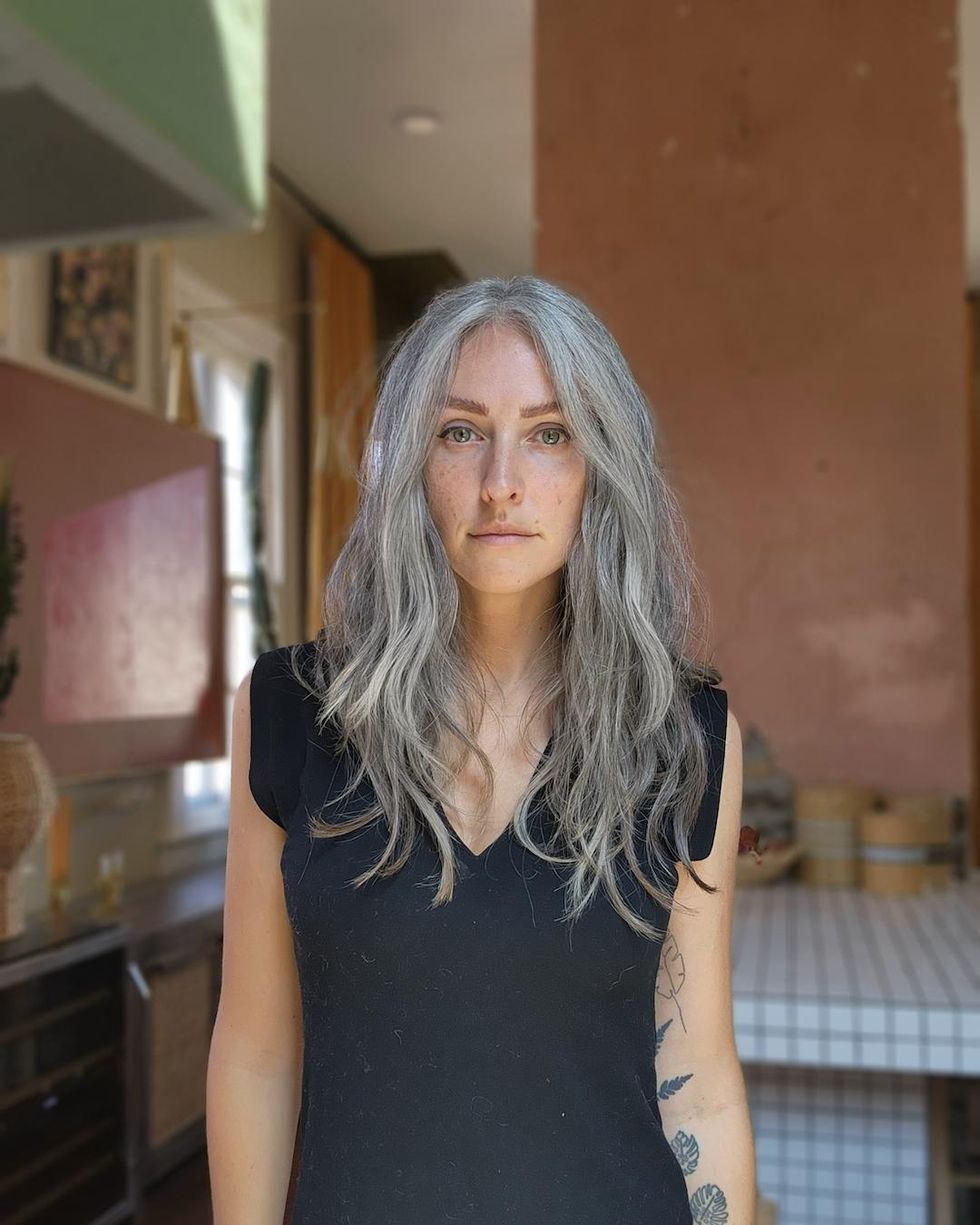
Photo: Courtesy of Liz Kamarul
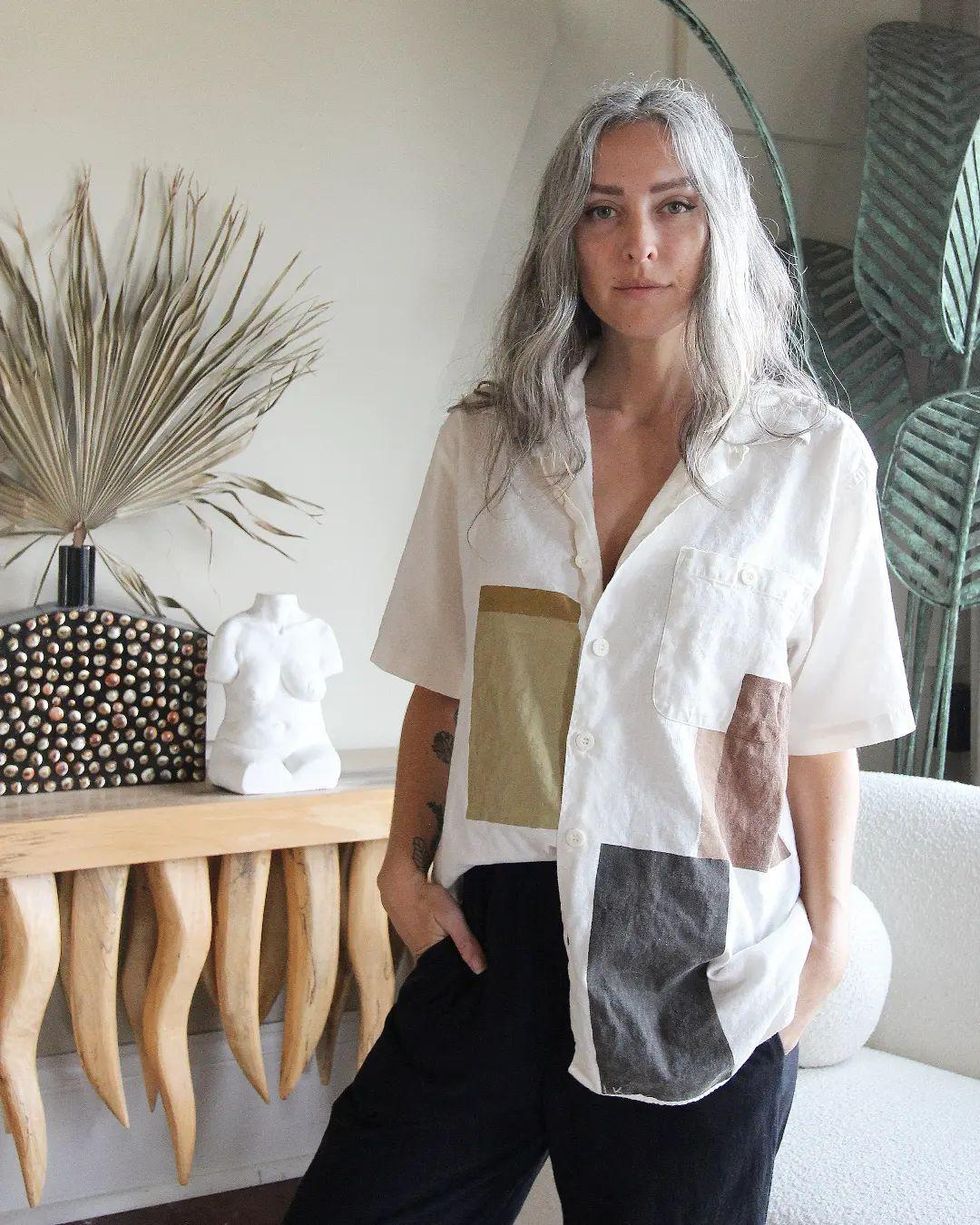
Photo: Courtesy of Liz Kamarul
“Finding my first gray hair was so traumatizing. I remember it so clearly: in high school, my mom was driving us somewhere and my friend spotted it from the back seat and said, oh my god, you have gray hair! It was mortifying. I didn't really start dyeing my hair until I got to college when I would see 15 or 20 new gray hairs at a time. As each year went on, they would multiply by the dozens. About seven years ago, I got to the point where I had a skunk stripe and I couldn't keep up with it, so I just bleached my hair blonde and just let it grow out. It was super easy and painless. Now I'm obsessed with it.
"When I was 17, gray hair meant that you were old so it felt traumatizing to be 17 and have grays—it felt like it was such a bad thing. Even through college, it just didn't feel okay. By the time there were so many that I couldn't deal with dyeing it, I just thought, forget it! This is who I am. I’m going to stop fighting it. Dyeing my hair was expensive and it was damaging my hair. My whole life I've always hated my hair. I would come back from the hairdresser and think this is hideous. But ever since I've let it go gray, I have been obsessed with my hair every day for seven years. And I get compliments on it every time I go out in public.
"When you have a gray stripe coming down the center of your hair, it definitely feels old. It felt like a battle between my young-looking hair and my old-looking hair. I think it made me feel older at the time. I grew up seeing my mom have to dye her hair all the time and I didn't want to have to be doing that for the rest of my life. When I let my hair go gray, she was still coloring her hair and I inspired her to stop dyeing it. Now she has the most beautiful pure white hair. It's amazing—she's so much happier and she looks so much better.
"My hair is a huge reminder to embrace what you have naturally. A lot of the time, we're always trying to fight that by straightening, curling, coloring or altering our hair in some way to find this ideal of beauty that you see in everyone else. But when you just let go and be who you are, it looks better anyway. I think that gray hair fits with my skin tone better than continuing to have dark or blonde hair. It's just been a nice eye-opener that what I am suits me better than trying to be something I'm not.
"Some of my gray strands are a lot more coarse, but it is what it is. I've never had a hair routine. I’ve never liked to blow dry my hair and I don't curl it very often. I just let it do its natural thing. But I have started using purple shampoos to keep it brighter."
Shop Liz's Gray Hair Essentials
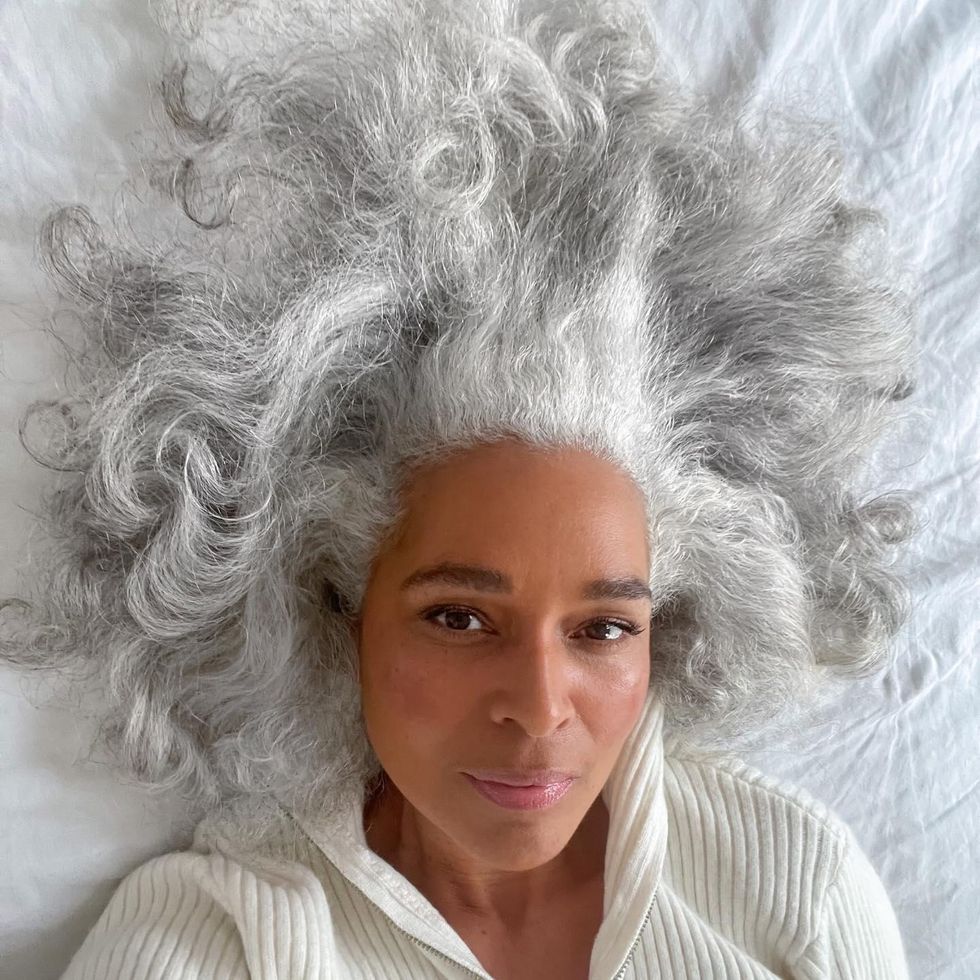
Photo: Courtesy of Mia Maugé
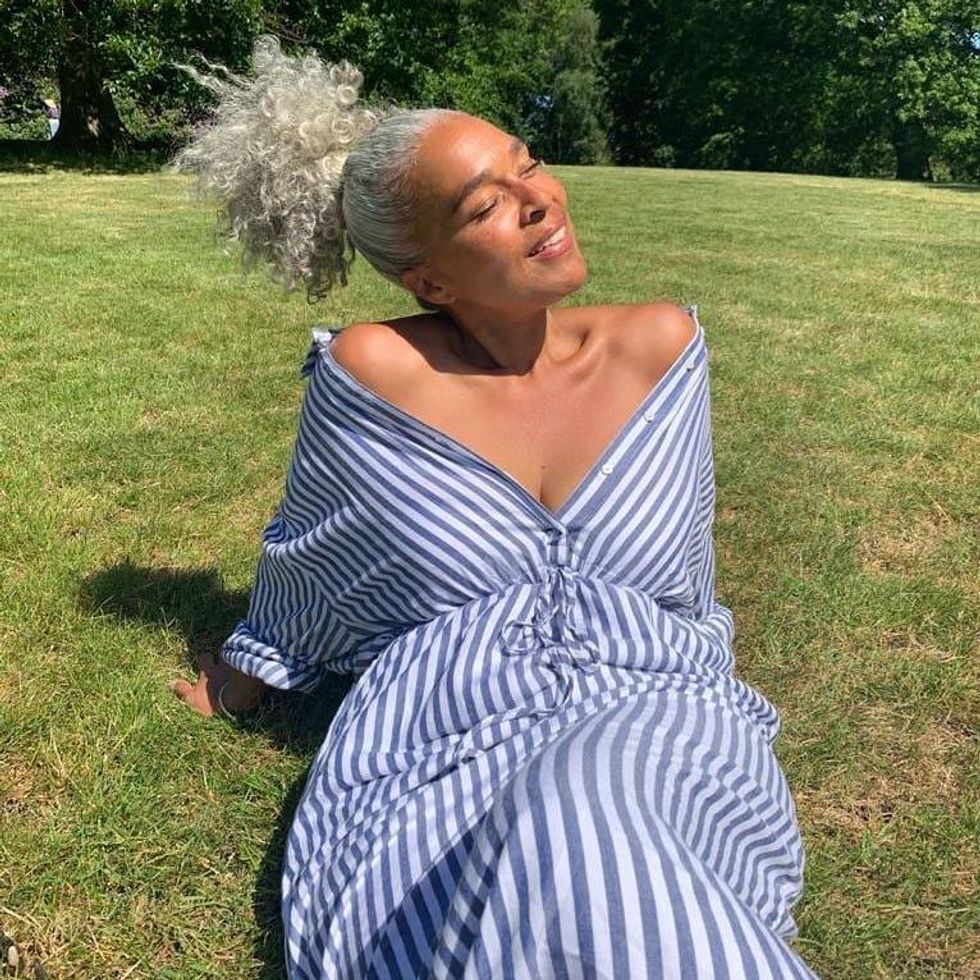
Photo: Courtesy of Mia Maugé
“I don't remember finding my first gray, but I remember when there were enough to feel like I needed to dye it—I would've been around 33. It was just after I'd had my second daughter in 1999. At the time, I was finding my feet as a mother and gray hair was a no-no. I didn't even consider not dyeing it. I remember when one of the dads on the playground thought it was hilarious that I was now dyeing my hair. That made me even more self-conscious about it.
"I spent almost two decades with this fear of people seeing my gray hair and thinking I would be deemed irrelevant by society. But funny enough, I always loved it. I always thought silver hair was beautiful but I just felt like, at 33, I was too young for it.
"By the time my daughters were teens, I was a single mom, I didn't have a partner, and I was working in a young environment so I felt even more pressure to not disclose my age. To live in fear of judgment is a horrible way to live. I would literally dye my hair every two weeks and the [silver] sparkles would appear within days. Then I'd cover it up with a scarf or a hat for a week and dye it again. That was my pattern for a very long time and it was horrible. Then I had an operation that required me to recover for six weeks. While I was recovering, I felt like it was time. I had just hit 50 and figured I’d try letting my gray grow out for about 6 weeks—I just kept going after that.
"I had very little support. I felt very alone. None of my friends and family, other than my two daughters, really got it. They thought I had lost my mind. I felt really unattractive for about two years. It was not an easy journey. But it has completely transformed my life, my mindset, my perception of beauty, all of that. And my career as well. I started modeling at 54 and I don’t think I’d be doing that if I wasn’t silver. It came completely out of the blue. I didn't get the best reception from friends and family but strangers were very receptive to it. I’d get the kindest people on a daily basis saying the loveliest things—I still get that to this day.
"That really does have an impact when your presence brings that kind of energy into your life, especially having had this desperate fear of being labelled old, over the hill and irrelevant. But people were so supportive—and men as well. I didn't know how to navigate being single and gray. I had no benchmark or reference point for that. It was almost like it stood for something. It said that I was someone who was being very authentic, honest and true—that's the feedback that I got from male friends and potential suitors. It wasn’t just how it looked, but for what it stood for."
Shop Mia's Gray Hair Essentials
Want more stories like this?
Can You Slow the Greying of Hair? We Investigate
Surprise—Your Hair Is Aging (and Changing) Right Along with Your Skin
Kate Walsh Is Embracing Aging—Not Avoiding It


